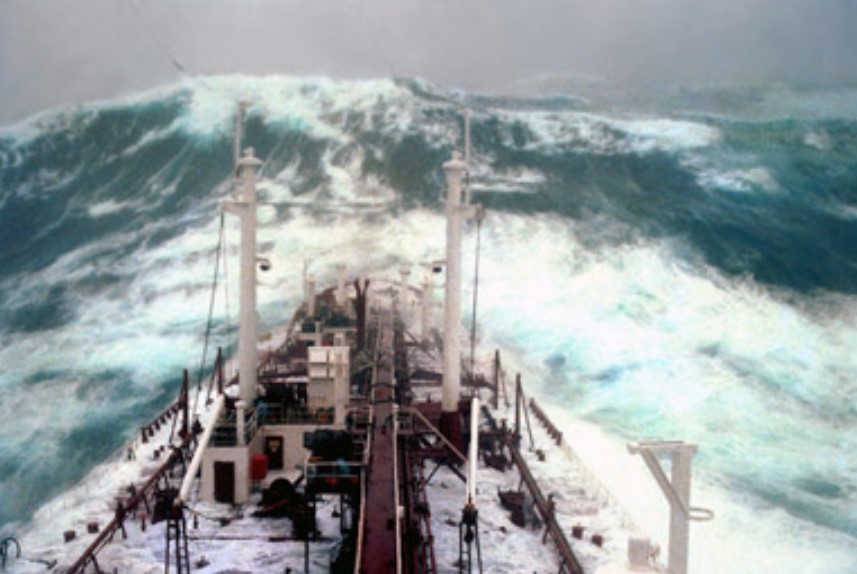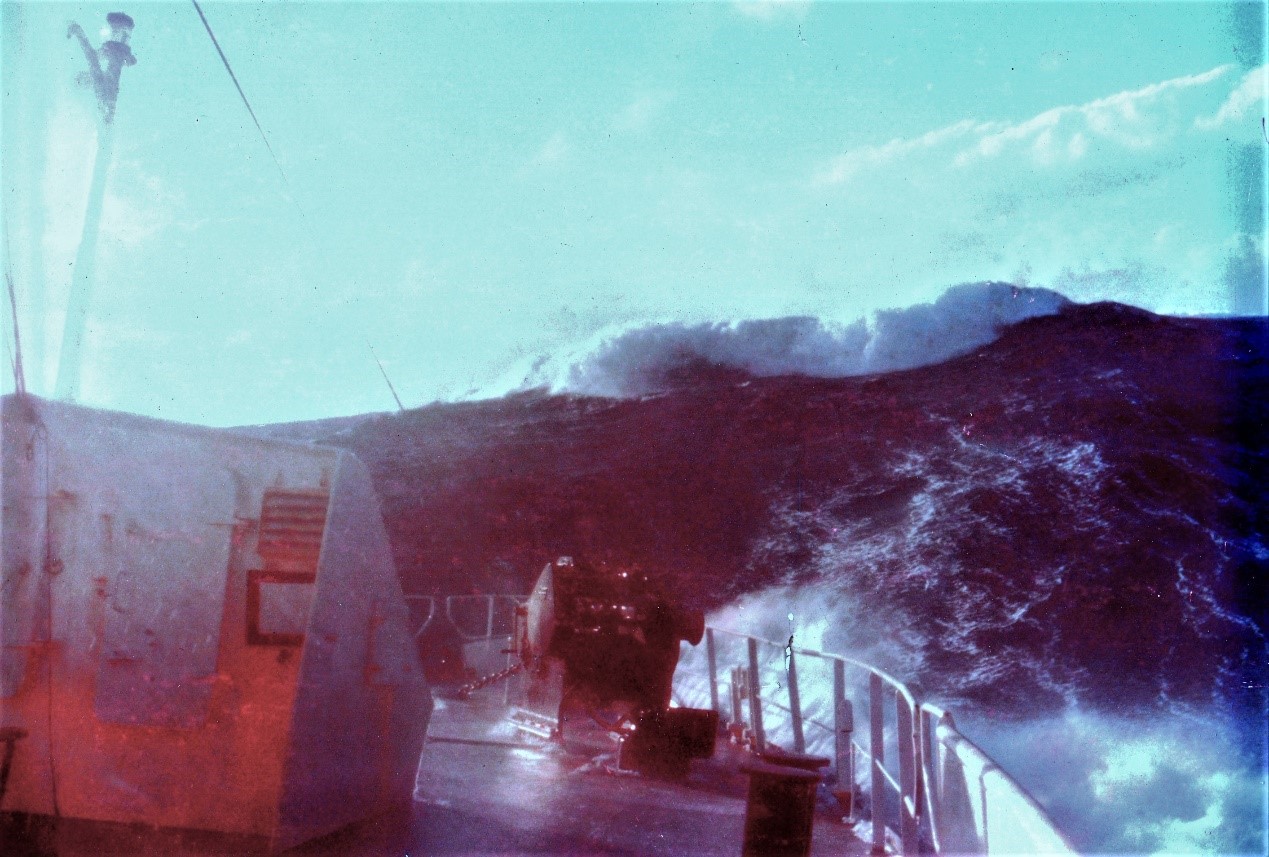Rogue Waves – Part II
By Dag Pike
In part two of this series, an experience in the Arctic will make you realize that the sea can be very unpredictable. Waves come in all shapes and sizes, sometimes when you least expect them. Rogue waves are extreme in the daylight, but at night you would get no warning.
Stormy Seas
The third extreme wave was experienced to the north of Iceland during the Cold War. Our big ocean-going tug was there on escort duties, protecting the British trawlers from the Icelandic patrol boats, who claimed that the Brits were fishing illegally. It is wild country up there close to the Arctic, and we were running before the big storm seas that are a frequent winter experience in the region.
Indeed, it is a good day up there between Iceland and Greenland when it is only blowing a force 8 gale. I was down on the low aft deck of the tug trying to get some good rough sea photos. I remember watching these big waves curling up behind us and then passing under the ship in a regular procession as I clicked away. Then, out of the blue came this rogue, a wave much larger than its brothers and sisters, rearing up and topped by a curling white crest. It was like a vertical wall of water with the crest maybe 40 to 50 feet high, several times higher than the regular waves of the day.
I took a quick photo and then rushed for shelter as the wave crashed over the stern and swept over much of the forward superstructure, half submerging the ship.
The seas north of Iceland are not my favorite place in the winter, and I got the feeling that that extreme wave was trying to tell us something. So, I can certainly confirm that these rogue waves do exist. On any ocean passage, you need to consider the risks.
Deep Troughs
With these rogues, we always talk about the height of the wave. But for every very high wave, there can also be some very deep troughs. These can be just as dangerous. Drop into one of those deep troughs, and there is a very real risk of the next wave dropping into that trough as well and swamping your boat.
I have experienced one of these deep troughs only once, and they do not always come before or after a rogue wave. You just come over the top of what looks like a fairly normal wave and there is this big hole on the other side.
Once again, I found this hole when I was testing new lifeboat designs. I can’t think of a better way to test a lifeboat than to drop it into one of these holes.
The boat was a new type of lifeboat with a semi-displacement hull that, in those days, would be the first lifeboat to have a speed over 10 knots. It was a day when it was blowing a normal gale of wind, but we had already had some experience with the boat in those conditions. The time had come to put the boat to the test in something more severe. You can’t just conjure up strong winds on demand, but I thought I would try the boat in the Portland Race.
This race is notorious for its waves, with wild breaking crests created when strong tides meet shallow water in a gale of wind, perfect extreme conditions to test a lifeboat’s performance in extreme, rough seas. This is a place where boats normally fear to tread, so I was nervous as we entered the wild seas. We went over the initial breaking crests quite happily, although with loads of spray. Fortunately, I had kept the speed down to somewhere about 5 knots, where I had good steerage way and control, easing the boat through the breaking crests.
No Warning
Gaining confidence, I eased the throttles up a bit. As we came over one quite normal breaking crest, there was this “hole” on the other side. I say hole but in fact, it seemed like there was just nothing on the other side. The whole boat became airborne and dropped into that hole, where I swear you could almost see the seabed. The boat was dropping so rapidly that our feet left the deck and stores below became airborne. Landing at the bottom, the next wave fell on top of us. I was so grateful that we were in a strong boat, and we eventually rose clear with only superficial damage. But the scary part of that “hole” encounter was the total lack of warning.
With luck, you may see a rogue wave from some distance off and have time to adjust your speed, at least in daylight. With a hole, you get no warning at all, which is what makes them dangerous. In that race, we had sought out some extreme conditions, and it was a place that boats would not normally think of entering.
It does make you realize that the sea can be very unpredictable and that waves can come in all shapes and sizes, sometimes when you least expect them. My encounters with both rogue waves and holes have all been in daylight, but at night you would get no warning. These extreme conditions do not go away just because it is dark. Perhaps when you don’t see them, they are less frightening.
In part three of this series, we will look at how these waves might be formed and how you can take steps to avoid extreme encounters.


